How Does a Blue Whale Obtain a Mate
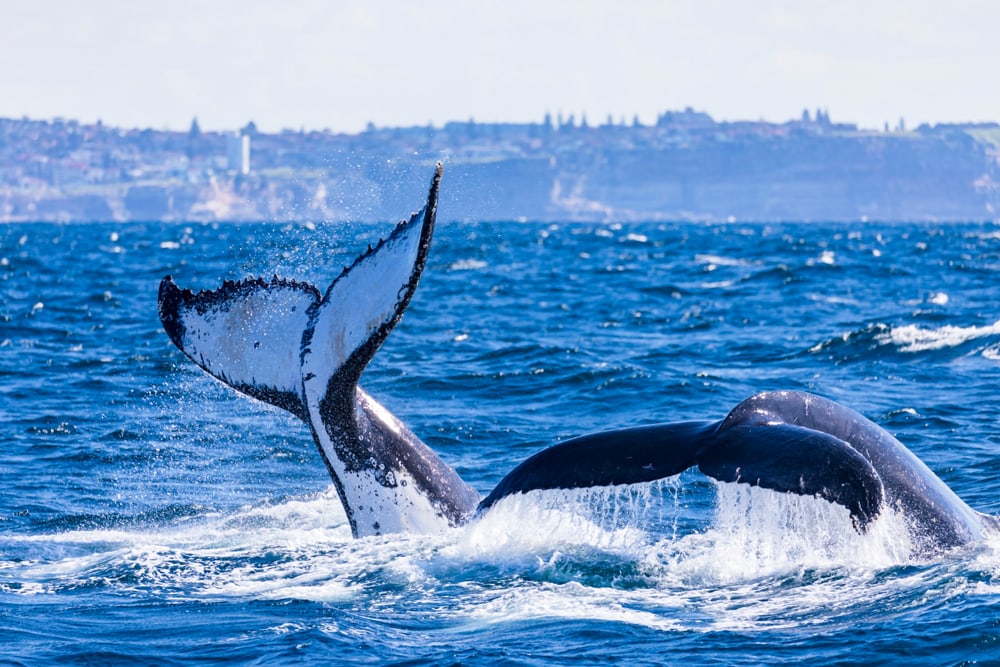
Although the process is more difficult underwater, whales mate similarly to every other mammal. After successfully courting the female, the male will touch his belly to hers. Then, he will penetrate her to inseminate her.
The penis of a whale is long and tentacle-like, leading many people to believe in supernatural beings living below the water. Hundreds of years ago, not much was known of the ocean, so sailors were fearful of large creatures with dangerous tentacles protruding from the water. Little did they know that these "tentacles" were just the penises of whales trying to breed.
There are several different species of whales, and although their reproduction differs between each species, they all have a lot in common. Most males court in the same way. Males will try to outcompete other males by fighting. They will also show off to females by breaching the water, singing to them, and yes, displaying their penis.
What Are Whales?
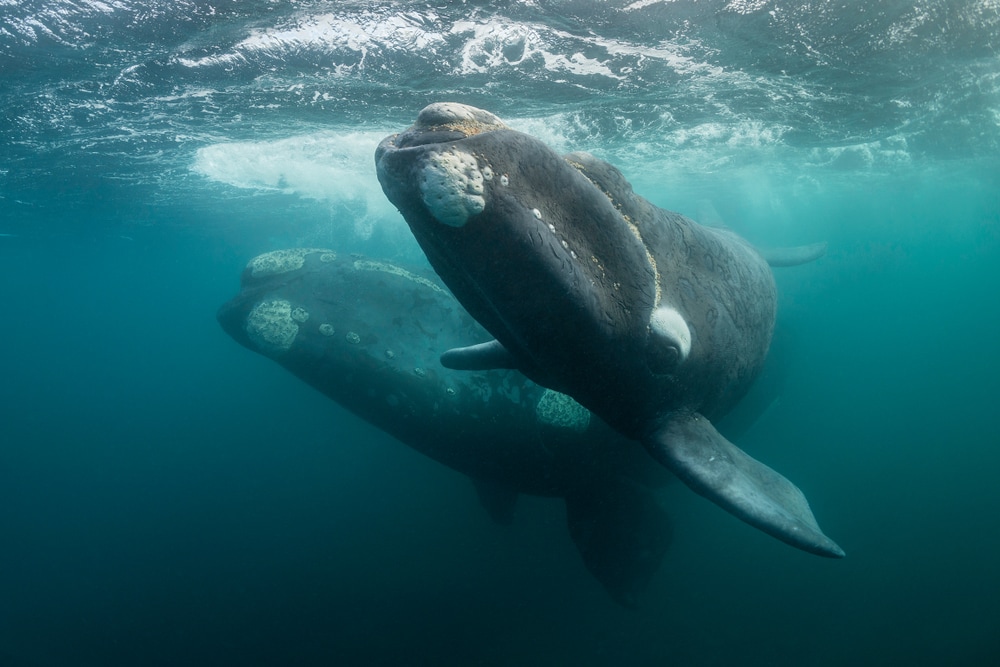
Whales are large, warm-blooded marine mammals that belong to the order Cetartiodactyla. The suborder is Whippomorpha, and the Infraorder is Cetacea.
They are the largest animal in the world, and they can be found inside every ocean. The smallest whale, the dwarf sperm whale weighs in at only 600 pounds (272.2 kg), but the largest whale, the blue whale, can weigh over 200 tons.
Although whales are air-breathers, they have evolved to live in water for their entire lives.
Toothed Vs Baleen Whales
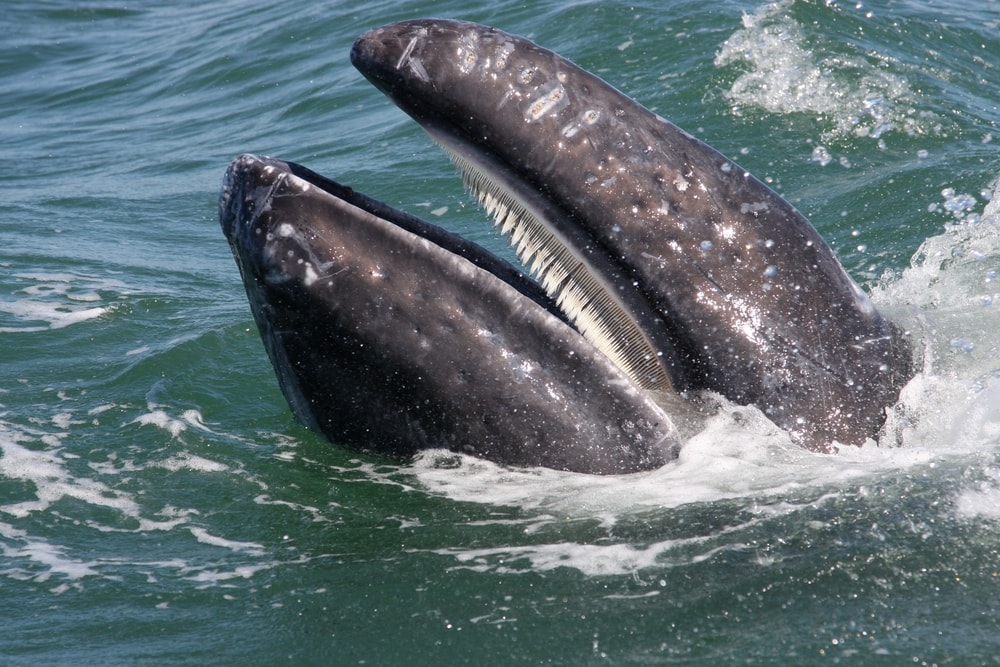
Although there are several species and families of whales, they are generally categorized into two groups: the toothed whales, and the baleen whales.
Clearly, the toothed whales get their names because they have teeth. They use these sharp teeth to eat things like fish, squid, and even seals. Some examples of toothed whales are the sperm whale and the narwhal.
Baleen whales on the other hand are typically much larger than toothed whales. Baleen acts like a strainer, filtering out water while catching krill. Baleen are long plates that are attached to the upper jaw of the whale. It is made out of stringy material similar to that of our fingernails.
The whales will use baleen by sucking in large mouthfuls of water. They will "spit" the water back out, leaving behind a mouthful of krill that they will then eat. Some examples of baleen whales include humpbacks, blue whales, and right whales.
Endangered
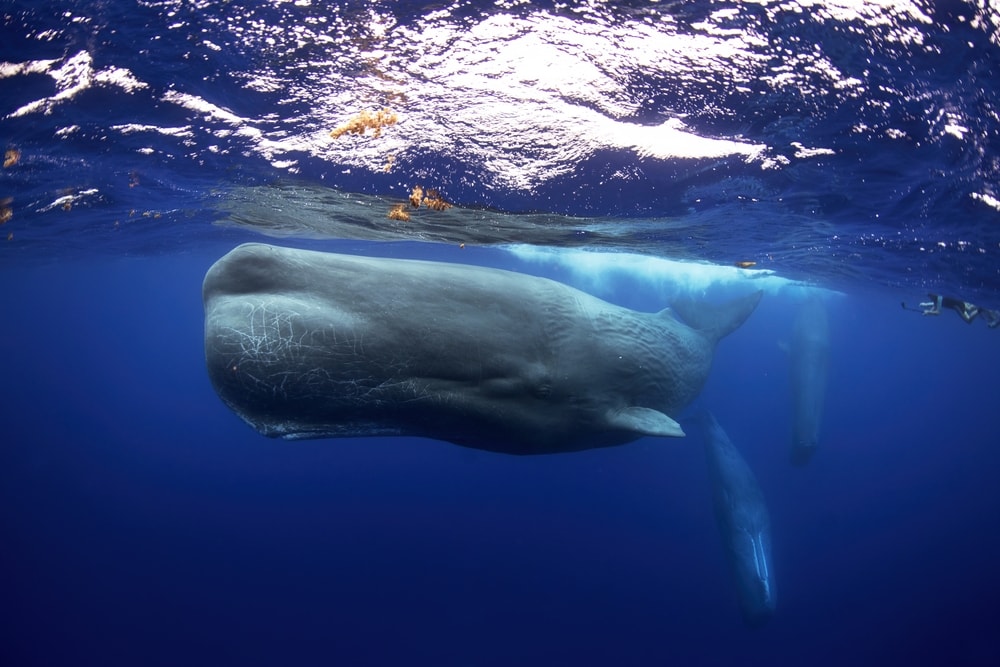
Unfortunately, there are many whale species, like the blue whale, right whale, and fin whale, who are endangered. In some countries, whaling is still legal, and people will hunt the animals for their meat and blubber. They are often frequently killed when they get caught in fishing nets, or are struck by boats.
Because whales have such a long gestation period, it is hard for them to maintain their population with the rate that they're being killed.
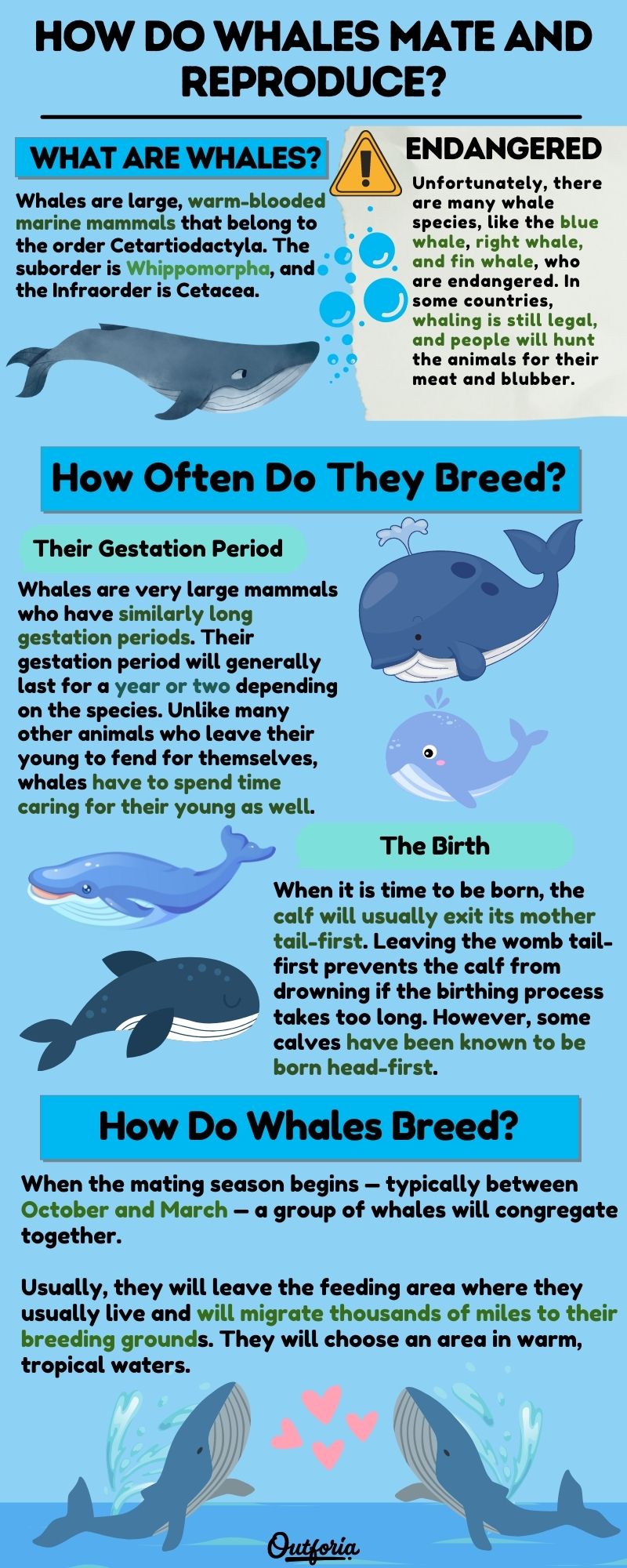
You May Also Like: All 21 Different Types Of Whales: Guide, Pictures And Classification
How Often Do They Breed?
Their Gestation Period
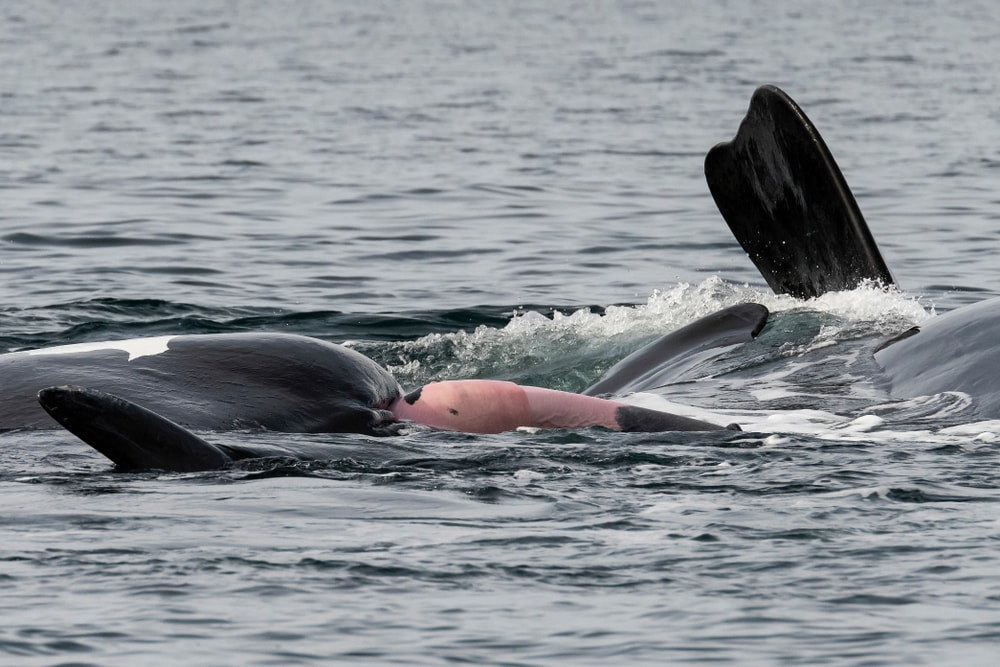
Whales are very large mammals who have similarly long gestation periods. Their gestation period will generally last for a year or two depending on the species. Unlike many other animals who leave their young to fend for themselves, whales have to spend time caring for their young as well. Usually they will spend about 5-6 months after birth caring for their babies.
Like other mammals, whale calves grow inside their mother's womb where they are supplied with nutrients through the umbilical cord.
Generally, mother whales will give birth to their young in the same area of water where they became pregnant, although this is not always the case. After breeding, she will generally return to her usual feeding grounds. When it is time to give birth, she will head back to her breeding grounds to give birth.
Because their gestation period is so long and they spend a significant amount of time caring for their young, whales don't breed often. A typical female will only breed once every two years. Because the calves are so large, it's typical that a whale will give birth to only one calf. However, there have been a few documented cases where the mother has given birth to twins.
The Birth
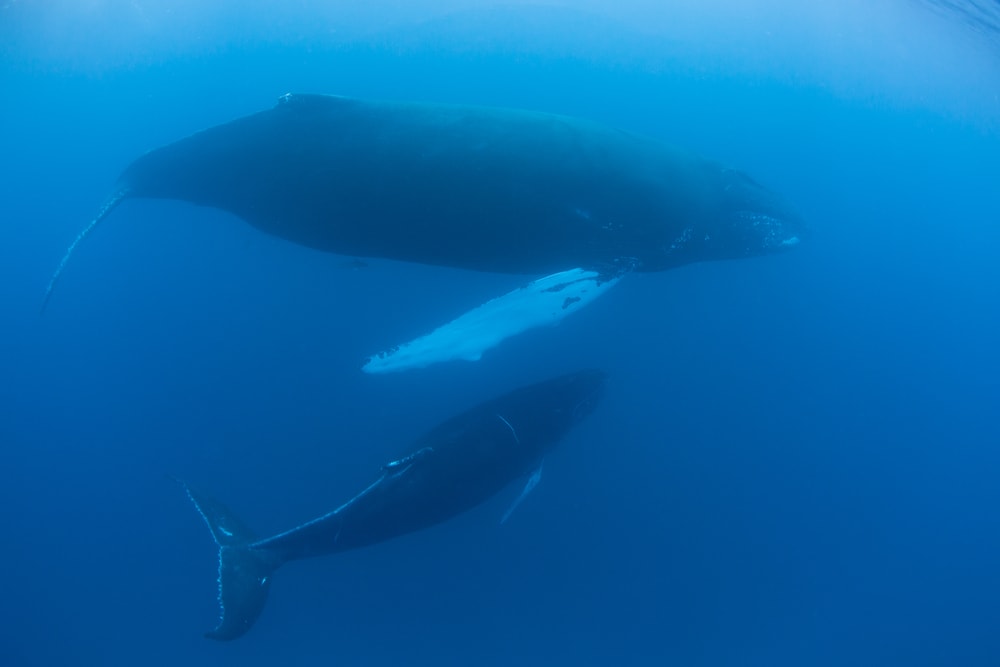
When it is time to be born, the calf will usually exit its mother tail-first. Leaving the womb tail-first prevents the calf from drowning if the birthing process takes too long. However, some calves have been known to be born head-first.
Like other mammals, the mother whale will produce milk to feed her young. She has mammary glands that produce milk that is much thicker than that of most mammals. The milk has a consistency like paste which makes it easier for the calves to drink.
They are unable to drink directly from the nipple, so the milk must travel through the water column where the calves will drink it up. The thickness of the milk also helps prevent the milk from dissolving into the water.
The mother whale will generally nurse her calf for several months until it is old enough to begin hunting on its own. This takes about 6 months for most species, but it can also last up to 2 years for other species.
Even after the calf has learned to hunt for itself, this does not necessarily mean that it will become independent and go off on its own. In fact, many calves choose to stay with their mother for a few years before they have to go off on their own.
Depending on the whale species, a calf may grow anywhere from twice its size, up to six times its size from birth to adulthood.
You May Also Like: How Do Whales Sleep? All About Their Surprising Ways To Slumber
How Do Whales Breed?
Migration & The Breeding Season of Whales
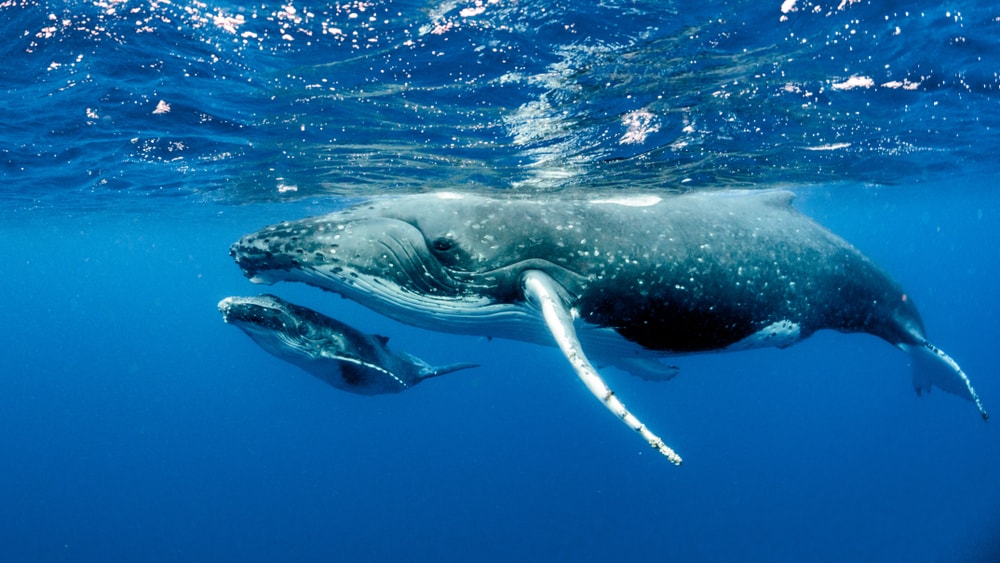
When the mating season begins — typically between October and March — a group of whales will congregate together.
Usually, they will leave the feeding area where they usually live and will migrate thousands of miles to their breeding grounds. They will choose an area in warm, tropical waters. Some of the most popular whale breeding grounds include Hawaii and the West Indies.
For example, the humpback whale may migrate up to 16,000 thousands miles from their feeding grounds to their breeding grounds.
Many times, whales that have to travel long distances are very intent on reaching their breeding grounds. They may not even want to stop for food, so they may fast, going months without food while migrating. Instead, they will survive off their stored fat reserves until they reach their breeding grounds.
However, there are some species of whales that will live in their breeding grounds year-round. For example, the bowhead whale will stay in the same arctic or subarctic region year-round.
Yet, other whales are not so concerned about where they mate, and will mate just about anywhere.
Mating may last for several months until all of the whales have had enough time to breed. Once breeding is over, migratory whales will travel back to their usual feeding grounds.
Why Whales Migrate
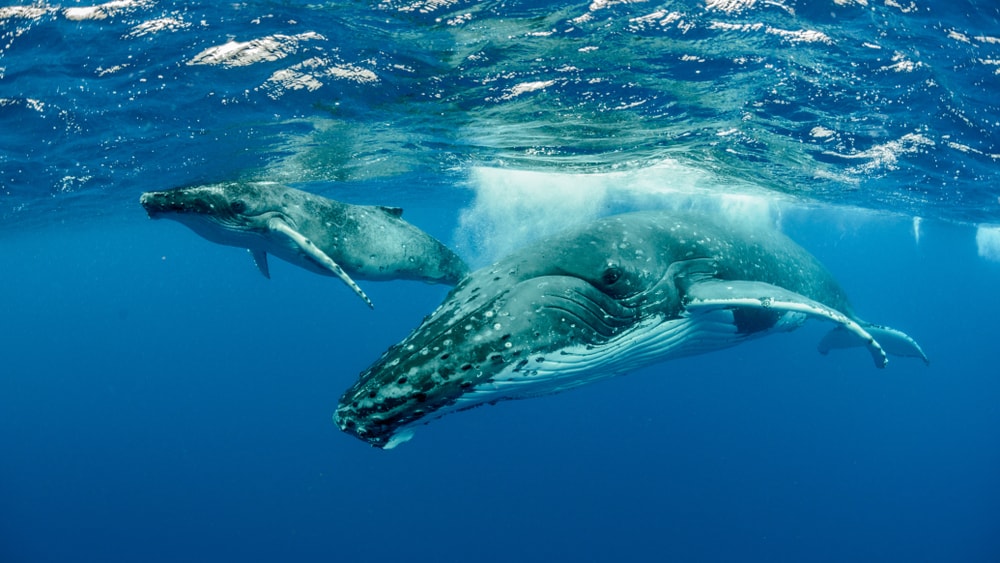
The reason that whales typically mate over the winter months is because they follow the pattern of their food. During the summer months, they typically inhabit areas further north.
During the winter, their food travels south to warmer waters. Many times, a whale's typical summer breeding grounds will freeze over during winter, or at the very least, become extremely cold. The whales will follow their food south and breed over winter.
Besides their food moving south, there are other advantages to whales moving south to breed and congregating in groups. For one, warmer water is a more suitable environment to raise young. Also, by mating in groups, whales reduce the risk of predation to their young. In some cases, the whales are able to find an area with little to no predation at all.
Oftentimes, after the calves are born, the mother's and their babies will stay in groups with other mothers and babies rather than going off on their own. They do this simply because it acts as added protection against predation.
There are some whale species that are social and will form family pods for years. The young may choose to stay with their original pod long-term, or they may choose to join a different pod as they grow older. Because pods usually consist of family members, they don't like to breed with one another. Therefore, they will often separate during breeding time to find a mate.
How Do Whales Choose A Mate?
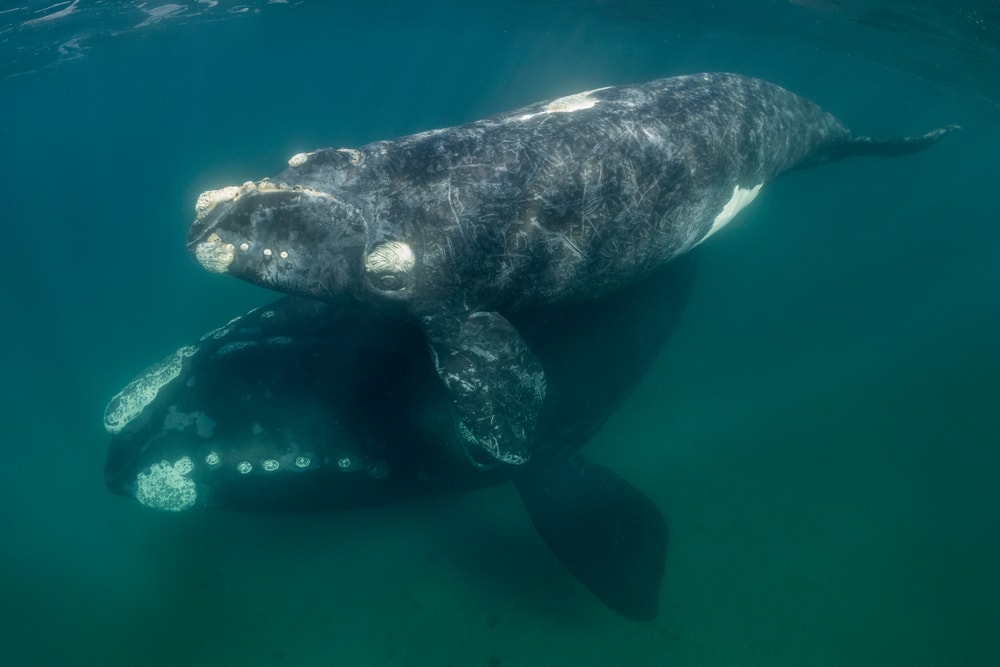
Although whales will only breed about once every two years, they are not loyal to a single mate. In many species, both males and females will mate with multiple partners over the breeding season. There are some species that only choose one mate for the season, but they will choose a new mate the next time they breed.
For females, this simply ensures that they are more likely to successfully become pregnant. For males, of course, it is increasing the likelihood that they can get multiple females pregnant.
Females may have several sexual partners, but of course, they only give birth to one calf that has a single father. Interestingly, because male whales produce so much sperm, a male's sperm can wash another's sperm from the female, thus ensuring that his sperm is the one that produces the offspring.
The Courtship Process of Whales
Of course, as with many animals, female whales are picky about which males they allow to mate with them. The males must work hard to attract their mate, and they will have to compete with other males in the process. To show the female that they are an acceptable mate, they must outcompete the other males by showing their dominance, competitiveness, and strength.
Some examples of these courtship rituals may include breaching, where the whale jumps out of the water. They may slap their fins against the water, they may sing, and they may even provide the females with a gift.
A whale song is thought to be a very complex form of communication, and whales will sing to each other outside of breeding to communicate with each other. During breeding, however, male whales will produce deep clicks and groans that can travel long distances throughout the water column. These sounds are thought to tell a female where a male is located.
Although males will usually compete with other males by simply showing that they are better, there are some species that will get physical. Males will charge other males in order to compete for a female. However, even if they do fight, it is not common for the males to sustain any physical damage.
There are a few exceptions, of course, such as the beaked whales. The males tend to become overly aggressive towards one another and may leave scars.
Interestingly enough, some whales will form what is called a "competition pod". Essentially, a lone female will be accompanied by a male, which is generally her chosen mate up to that point. However, a group of males will form a competition pod to fight against her escort to win his place. These groups may include just a few males, or up to 15.
On the other hand, there are certain species that are very gentle during the breeding process, and the males will not become physical at all. For example, male gray whales will help other males mate. While the one whale mates, another male will hover beneath them, supporting them with his back.
Whale Reproductive Organs
A male whale's genitals are very large, so they can easily get in the way while the male is trying to swim. Because of this, they will keep their genitals tucked away inside a cavity in their body to make swimming easier.
When it is time to mate, the male will position himself so that he is hovering over the female at a slight angle. His belly will be touching the female's side, and he will angle himself so that he is able to ejaculate his sperm into the female's vagina. Sometimes, they even do this while swimming.
One interesting fact about male whale's genitals is that they are likely behind the lore of sea monsters like the kraken.
We knew very little about the ocean a few hundred years ago, so sailors would become frightened when they saw what looked like large tentacles breaching the water. However, we know now that these "tentacles" were likely whale penises that the whale's display during the courtship process.
Overall, the breeding and courting habits of whales are going to vary greatly depending on which type of whale is breeding. Therefore, "how do whales breed" is not a simplistic, all-encompassing answer. To truly know how whales breed, we need to look at the different species.
You May Also Like: How Do Eels Reproduce? The Mystery Of Eel Sex Explained
8 Different Families of Whales
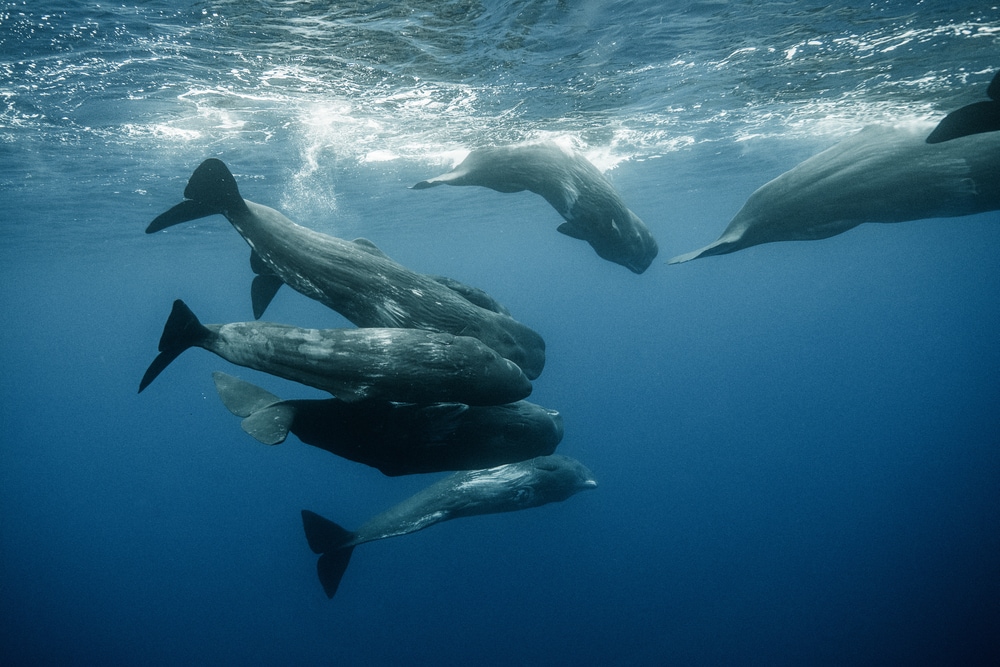
There are eight different families of whales that encompass all the species. Today, we will look into each of these families to see how their breeding habits differ.
1. Rorquals (Balaenopteridae)
The largest baleen whales belong to the Rorqual family. The whales that belong in this group include the Blue whale, Fin whale, Sei whale, Bryde's whale, Eden's whale, Common Minke whale, Antarctic Minke whale, Omura's whale, and the Humpback whale.
Overall, rorqual whales have long, slender bodies that are streamlined for swimming. The dorsal fin can be found about ⅔ of the way down their back.
These whales are characterized by the way they hunt: through lunge feeding. They swim at very high speeds with their mouths wide open. Large amounts of water will rush into their mouth where it will be filtered out by their baleen plates.
All rorquals also have many folds of skin that go beneath the mouth to the navel. These folds allow the whale's mouth to expand for feeding.
Reproduction & Growth Habits
Blue Whale (Balaenoptera musculus)
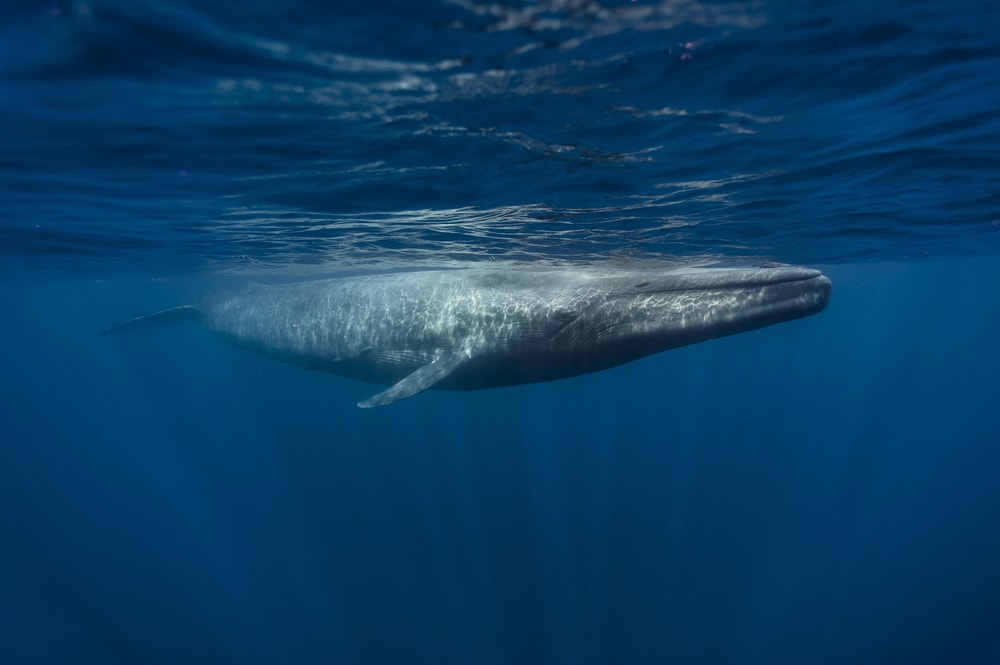
The gestation period for blue whales lasts for about 11-12 months which is relatively short for an animal the size of a blue whale. Generally, mothers will give birth to a single calf, although twins are possible in extremely rare cases.
The mothers give birth during the winter months, but they choose a location that is at low altitude and has warm water.
When a blue whale is born, the calves are about 22.9-26.2 ft (7-8 m) long. While they are growing, they can gain up to 198.4 pd (90 kg) a day just from nursing. They will continue nursing until they are about 7-8 months old at which point they will usually be about 52.5 ft (16 m) long. They usually become fully independent from their mother at about 2-3 years of age.
Both male and female blue whales reach sexual maturity at about the same age. Females become sexually mature at about 5 years of age, where males become sexually mature slightly sooner.
At sexual maturity, females will be about 68.9-75.5 ft (21-23 m) in length, while males will be about 65.6-68.9 ft (20-21 m) in length. Once they reach maturity, the females will begin birthing calves every 2-3 years.
The average lifespan of a blue whale is 80-90 years.
Fin Whale (Balaenoptera physalus)
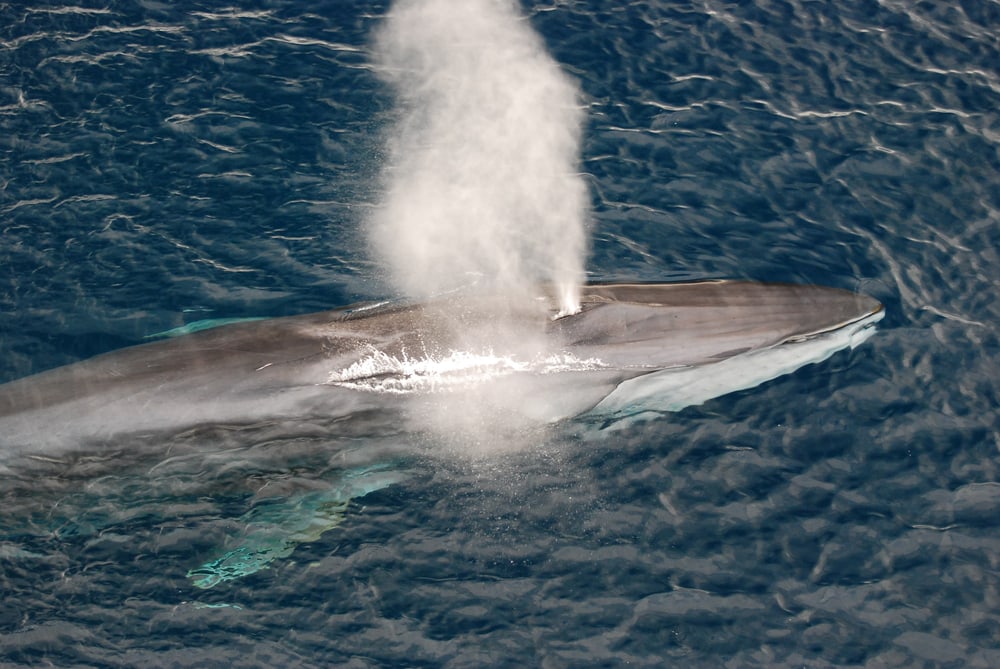
Fin whales are believed to be monogamous animals because they can be seen swimming in pairs throughout the breeding season.
To court a female, the male will chase after her and sing to her with vocalizations that are low in frequency. Researchers believe that only the males produce these vocalizations, and they utilize low-frequency sounds because they travel further through water. It is important that they can call females over a distance because they don't have a specific breeding ground.
Similar to the blue whale, fin whales will mate and breed over the fall and winter months, but will travel to warmer waters to do so. Breeding occurs between November and January in the northern hemisphere, or June to September in the southern hemisphere.
The gestation period for a fin whale is about 11-11.5 months, and the mother will give birth to just one calf. Also like the blue whale, it is possible for fin whales to give birth to twins. This phenomenon is very rare, though, and usually one or both of the calves will die.
When the calf is born, they will be about 19.6 ft (6 m) in length and will weigh just 7,716-7,937 pds (3,500-3,600 kg). Fin whale calves take longer than blue whale calves to become sexually mature. Sexual maturity for both males and females occurs between the ages of 4-8. At sexual maturity, a male will be about 61 ft (18.6 m) long, while a female will be about65.2 ft (19.9 m) long.
Although fin whales reach sexual maturity between the ages of 4-8, they will not reach physical maturity for several more years. It can take them up to 22-25 years to grow to their full size. However, their full body lengths are not much larger than their sexually mature lengths. A male will reach about 62 ft (18.9 m) long, while a female will reach about 65.9 ft (20.1 m) long.
The female will give birth to one calf every 2-3 years, and she will wait 5-6 months after separating from her calf before she will mate again. Unlike blue whale calves who will stay with their mother for years, a fin whale calf is weaned after just 6-7 months. By 8 months, they will have left their mother to be independent.
Whale calves are not able to suckle from their mothers like most other mammals do. Instead, the mother will spray the milk into her calf's mouth through her nipple sinus. She must do this every 8-10 minutes throughout the day until the calf reaches about 45.9 ft (14 m) in length.
Once the calf is weaned, the mother will take it to the polar feeding areas where she will teach her calf how to hunt for itself.
The average lifespan of a fin whale is about 75 years.
Sei Whale (Balaenoptera borealis)
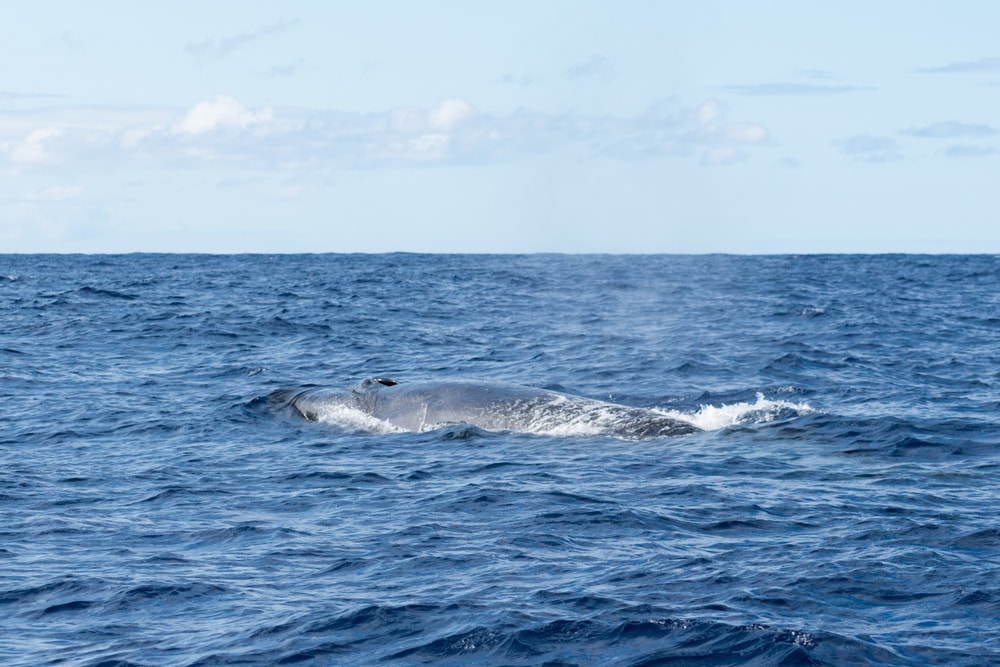
Researchers believe that sei whales may possibly form social groups during the mating season. However, more research needs to be done to determine this for sure.
Sei whales also breed over the winter months, mating between November and February in the northern hemisphere and between May and July in the southern hemisphere.
The gestation period of sei whales last for about 10.5-12 months, and females typically give birth to just a single calf. When the calf is born, they are very small, just 14.7 ft (4.5 m) in length.
The calf will stay with the mother, nursing, for just 6-7 months, after which they will be weaned and become independent of the mother. Typically, a female sei whale will only give birth once every two years. However, researchers have noticed these whales giving birth more frequently, likely due to an increase in predators, such as humans.
Sei calves do not reach sexual maturity until about 10 yeas of age, and they won't reach full physical maturity until about 25 years of age.
Sei whales have an average lifespan of about 74 years.
Bryde's Whale & Eden's Whale (Balaenoptera edeni)
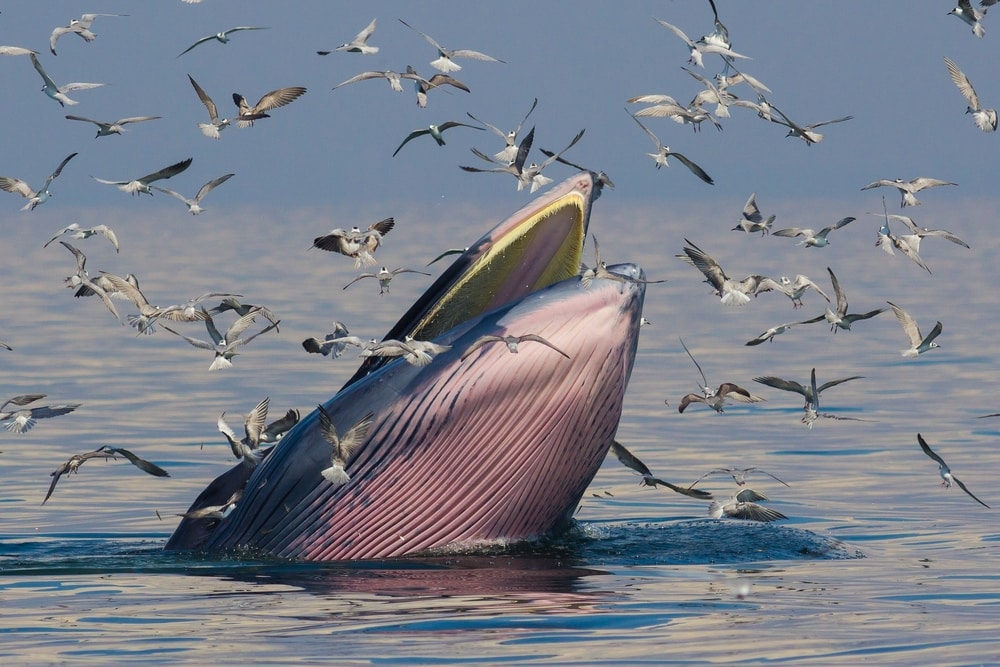
Bryde's whales and Eden's whales are very similar. They are both classified as Balaenoptera edeni, but the Byde's whale is much larger. Besides that, they very geographically because the Bryde's whale can be found in warm, tropical waters worldwide, while the Eden's whale is found only in the Indo-Pacific.
When Bryde's whales give birth depends largely on the area they inhabit. Some of these whales prefer to live further inshore where they are largely sedentary. These whales will give birth throughout the year at no particular time. However, the whales that prefer the open ocean will breed during the fall months.
The gestation period for these whales is about 11-12 months. Mothers will typically give birth to just one calf a season, although twins are possible. At birth, the calves will be just 11.1 ft (3.4 m) long and 1,984.1 pds (900 kg) in weight. The mother will then wait 6 months after separating from her calf before breeding again.
A calf will begin to wean at about 6 months of age at which point it will become independent from its mother. Bryde's whales will not reach sexual maturity until they are about 10-13 years old and (10-12 m) in length.
The average lifespan of a Byrde's whale is about 50-70 years old.
Common Minke Whale (Balaenoptera acutorostrata)
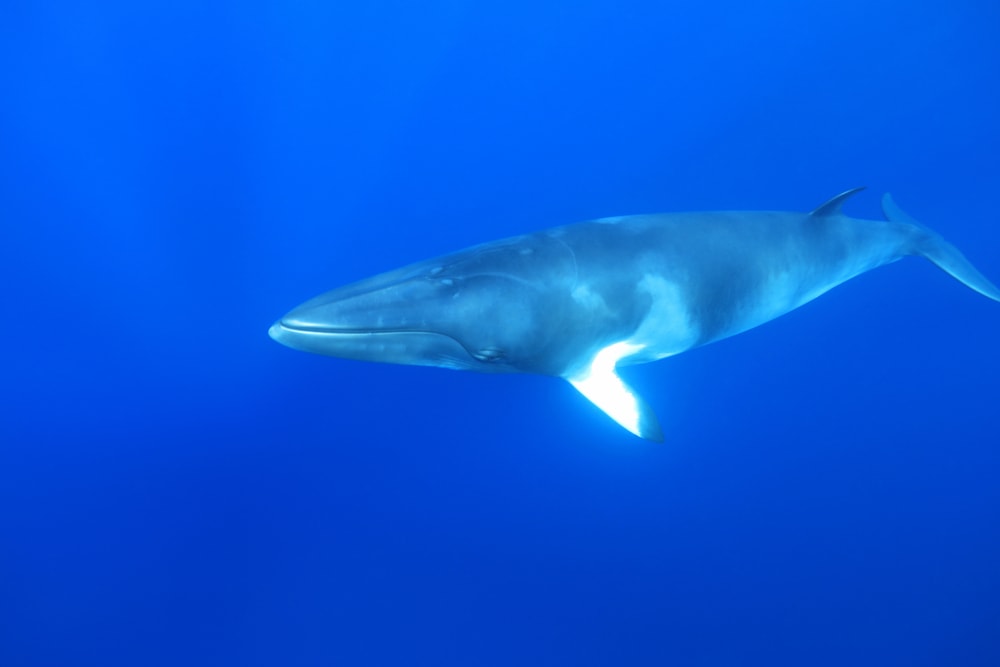
There is not too much known about the breeding habits of the common minke whale. Like all whales, it is only common for the common minke whale to give birth to one calf at a time.
The breeding period for these whales is a bit longer than for most whales. They breed from winter into the spring months, from December until May for those that live in the Atlantic ocean. For minke whales that live elsewhere, they can breed at any time throughout the year.
The gestation period lasts for about 10-11 months, and the calf is just 992 pds (450 kg) at birth. A mother common minke whale will give birth about once every two years.
The calves are weaned at the young age of just 5 months. They do not become sexually mature until they are about 6 years of age, however. They will continue to grow for several more years. The females will not reach physical maturity until about 18 years of age, and the males will reach maturity at 20 years.
The average lifespan of a common minke whale is 45 years.
Antarctic Minke Whale (Balaenoptera bonaerensis)
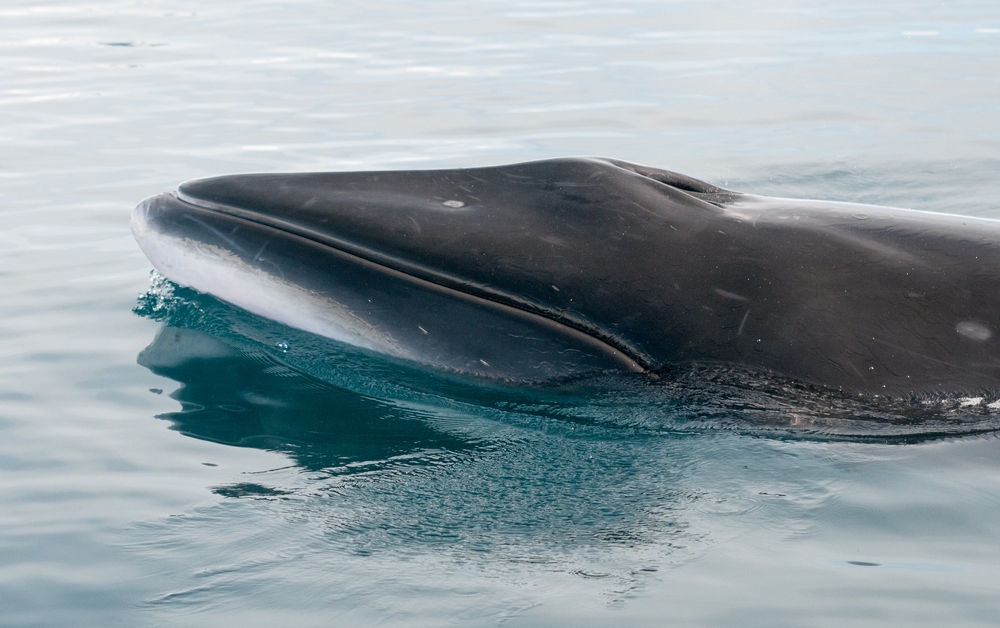
Not very much is known about the mating habits of Antarctic Minke whales, but researchers believe that they may be polygymous. They seem to reside in structured groups throughout their breeding grounds, so it's likely that they do not act monogamously.
These whales do not appear to be very picky about where they will breed, although they prefer to stay away from the coasts. They have been found breeding in a variety of different open water habitats. During the non-breeding season, Antarctic minke whales are found further north, but during the breeding season, they typically breed at a latitude of 10-20 degrees south.
The gestation period of the Antarctic minke whale is about 10 months. They will typically give birth to a single calf that is just 8.8 ft (2.7 m) long. Like the blue whale, Antarctic minke whale calves stay with their mother for a long time. They will only nurse for about 3-6 months, but they will not part from their mother for about two years.
Antarctic minke whales will not reach sexual maturity until about 7-11 years of age.
The average lifespan of an Antarctic minke whale is 73 years.
Omura's Whale (Balaenoptera omurai)
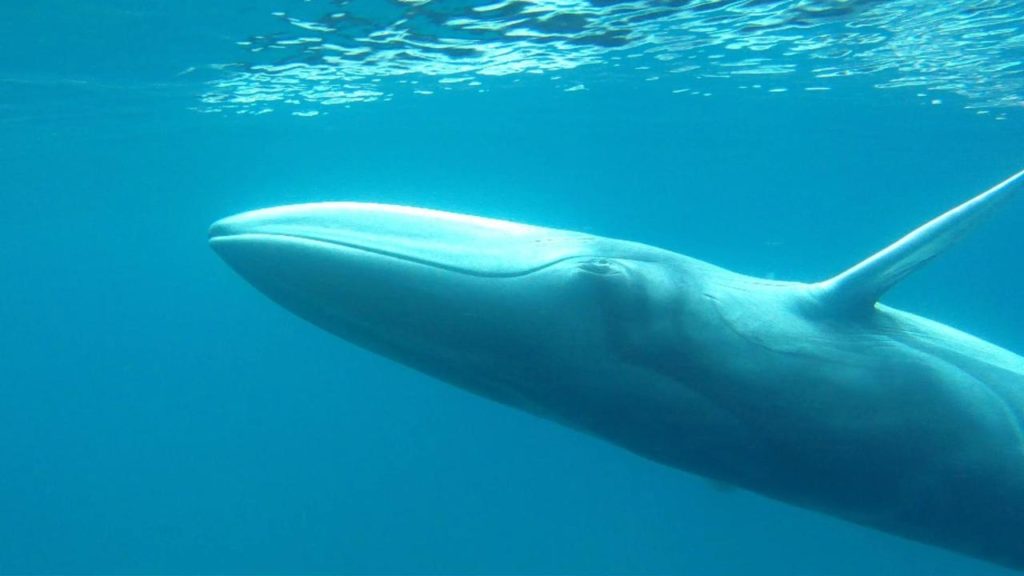
Unfortunately, there has not been much research done concerning Omura's whales. Until 2003, these whales were thought to be a smaller version of the Bryde's whale. Because of this, there are only 9 individuals who are confirmed to be Omura's whales. This makes research almost impossible.
What we do know is at the time of physical maturity, males will reach about 33 ft (10 m) long and females will reach about 37.7 ft (11.5 m) long.
Humpback Whale (Megaptera novaeangliae)
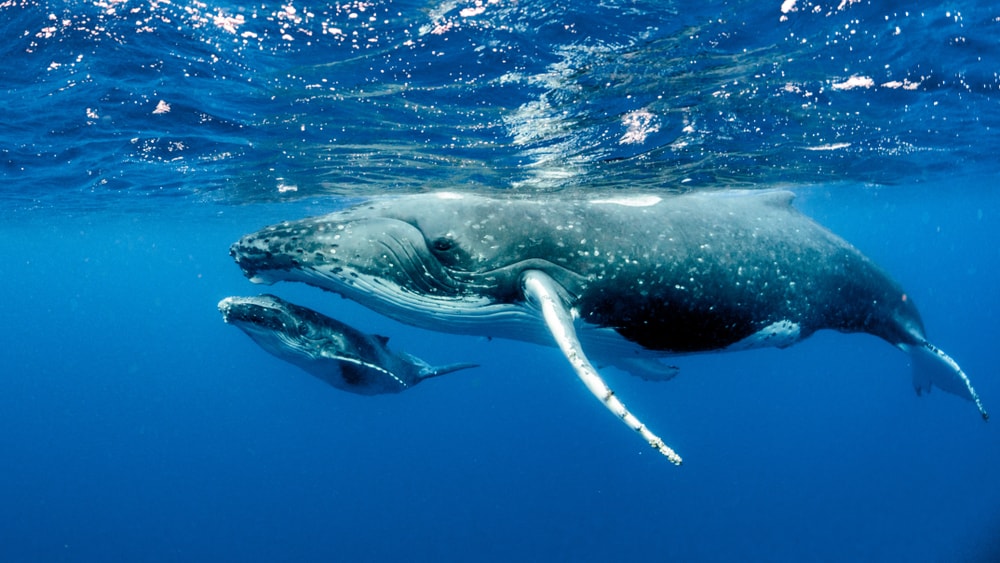
Humpback whales are believed to be polygynous or polygamous, and the males will fight aggressively with one another for access to the females.
Like most of the other whales on this list, humpback whales breed during the winter months, but move to warmer, tropical waters to do so.
During the breeding period, the male's testes will enlarge in sync with the female's ovulation.
When they are ready to breed, the male and female will swim together in a line, with the female as the leader. They will then roll around together while tail fluking. Then, they will both dive down and resurface in a vertical position. Their undersides will be very close together, and they will breach the water at a point just below their flippers before falling back to the surface.
The gestation period lasts for about 11-11.5 months, and the mother will give birth to a calf about once every two years. Calves are born at a length of just 13.1-14.7 ft (4-5 m) and will nurse from their mother for about five months. After this time period, the calves will be weaned and become independent from their mother.
Sexual matirity of humpback whales will be reached at just 4-5 years of age.
The average lifespan for humpback whales is 77 years.
2. Right Whales (Balaenidae)
The family Balaenidae contains three species of right whales: the North Atlantic Right whale, the North Pacific Right whale, and the Southern Right whale. It also contains the Bowhead whale.
The whales comprising this family can reach up to 45-50 feet in length and can weigh up to 80 tonnes. You can recognize them from their jaws which are arched and narrow. The arching makes the whales appear to have a curved jaw bone.
Their heads are also exceptionally large compared to the rest of their body. The head alone makes up about 40% of the body length. In comparison, the flippers are wide and short, and the whales do not have a dorsal fin.
Like the rorquals, balaenidae whales are baleen whales who filter their prey out through the water.
Reproduction & Growth Habits
North Atlantic Right Whale (Eubalaena glacialis)
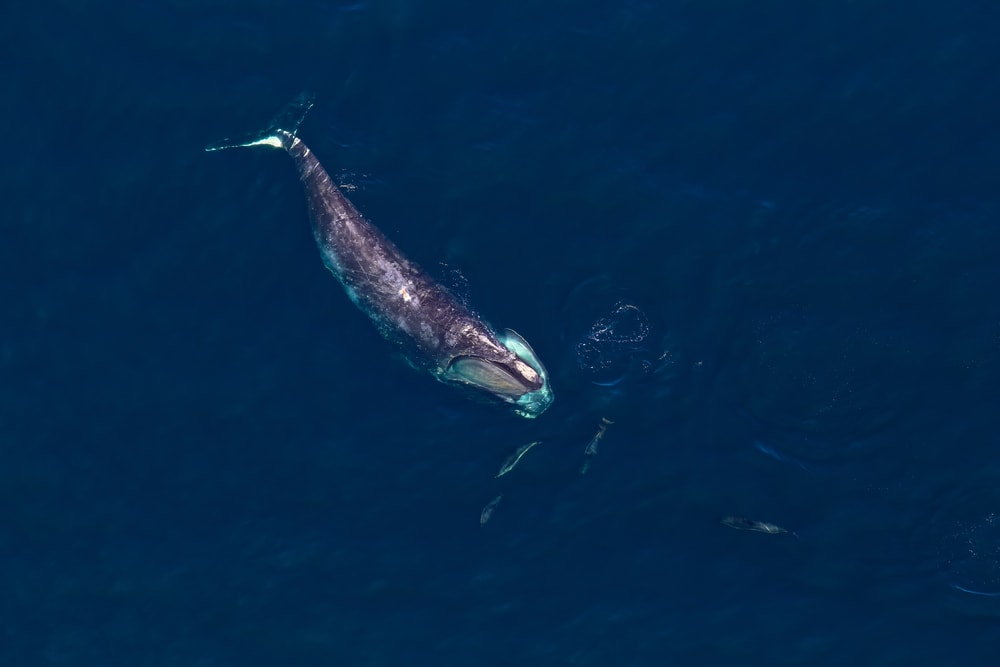
North Atlantic right whales will breed during the winter months from December until March. Unlike most other whales who give birth about once every two years, the North Atlantic right whale will only give birth once every 3-4 years.
At birth, the calves will only be about 14.7-19.7 ft (4.5-6 m) in length. However, they grow very quickly and can grow up to 39.4 ft (12 m) by just 18 months of age.
Males and females will reach sexual maturity between the ages of 5-10. At sexual maturity, the males will reach a length of about 49.2 ft (15 m), while the females will grow to about 50.8 ft (15.5 m).
When they are breeding, the male and female will spend a significant amount of time nuzzling each other. They will then begin rolling about each other while exposing their flippiers, flukes, bellies, and heads. Sometimes, the male will place his head on the hindquarters of the female.
Breeding may last up to two hours in this species, and both the whales will go their separate ways afterwards. During these bouts, you can often see both whales at the surface of the water with their bellies in the air. However, researchers believe the females likely due this to move their genitals out of reach.
Although the mating ritual of these whales is quite intimate, it's believed that North Atlantic right whales are polygymous and do not form a bond. Despite these whales likely having multiple partners, the males do not become aggressive with the other males, which is quite uncommon in mammals.
The average lifespan of a North Atlantic right whale is 67 years.
North Pacific Right Whale (Eubalaena japonica)
The exact mating courtship rituals in North Pacific right whales has not yet been observed. However, it is likely that they form similar bonds to North Atlantic right whales and display the same mating behaviors.
Like other right whales, the North Pacific right whale will breed in the winter, giving birth in the spring. The gestation period lasts for about 12 months, and the calf will only be about 19.7 ft (6 m) when born. Mothers will normally give birth to one calf every 3-4 years.
It is likely that the calf will nurse for about 6-7 months. Researchers are not sure at what age a calf may stop nursing for good, or when they will become independent of their mother.
North Pacific right whales will reach sexual maturity at about 49.8 ft (15.2 m) in length for males or 51.8 ft (15.8 m) in length for females. They will reach these lengths at about 10 years of age.
Right whales are believed to have the largest penises of any mammal in the world. North Pacific right whales have a penis that is retractile and can reach 7-8.8 ft (2.15-2.7 m) in length.
Their testes are also quite large with an average length of 6.6 ft (201 cm), a diameter of 2.6 ft (78 cm), and a weight of 1,157 pds (525 kg). In comparison, the largest ovary found in a female right whale was only 13.8 pds (6.3 kg).
The average lifespan of a North Pacific right whale is 67 years.
Southern Right Whale (Eubalaena australis)
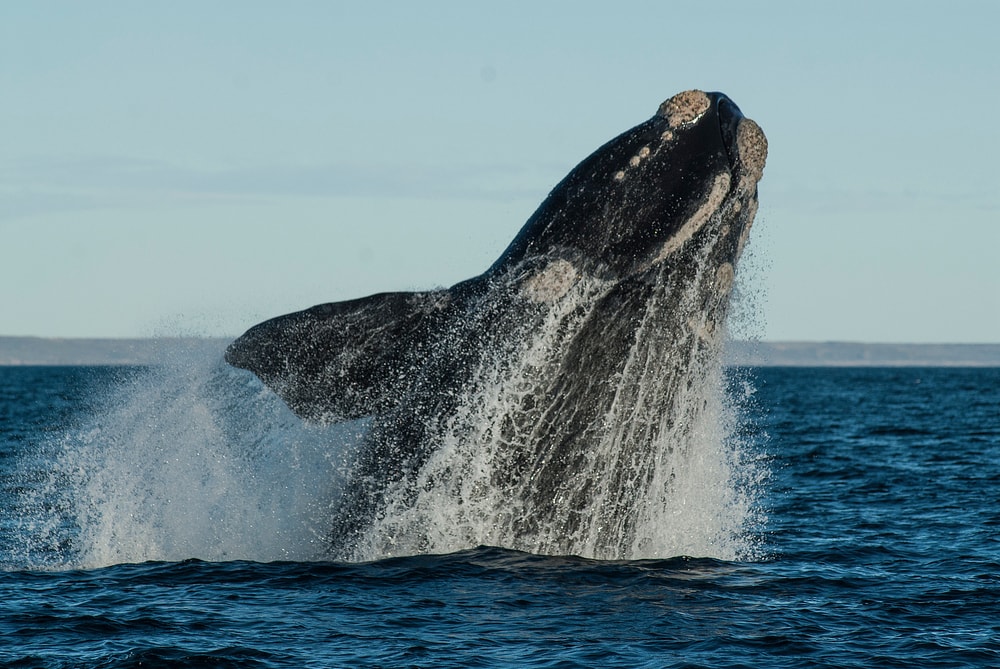
Southern right whales are polygamous, and the females may have up to seven mates throughout a single breeding season. Although this is the case, there doesn't seem to be any aggression between the various males mating with the same female. After mating is over, the male and female simply go their own way.
The gestation period of these whales lasts for about 12 months, and the calf will nurse for about 4-6 months. They will not reach sexual maturity until about 10 years of age.
Southern right whales can live up to 70 years.
3. Pygmy Right Whales (Cetotheriidae)
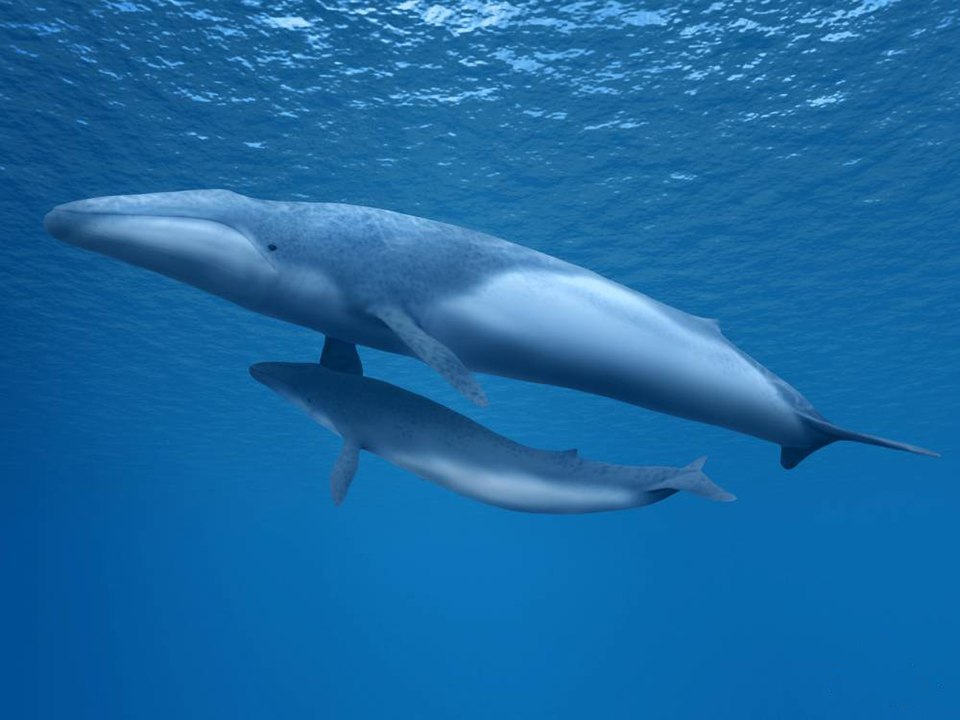
Pygmy Right whales are also baleen whales, but they are smaller than the other baleen whales on this list. They will only weigh up to 7,562 pds (3,430 kg), and will only reach up to 17.9 ft (5.4 m) in length.
Like the larger right whales, Pygmy Right whales also have an arched jawline. However, their jawline is not nearly as pronounced as that of their larger cousins. These whales are light to dark gray in coloration with lighter spots behind the eyes.
Unfortunately, scientists do not know much about this species of whale because they were believed to be extinct before 2012.
Reproduction & Growth Habits
There is not much known about the reproduction of pygmy right whales, either, although it is likely similar to that of other right whales. Scientists speculate that the gestation period lasts between 10-12 months, and they will wean from their mother at about 6 months of age.
4. Gray Whales (Eschrichtiidae)
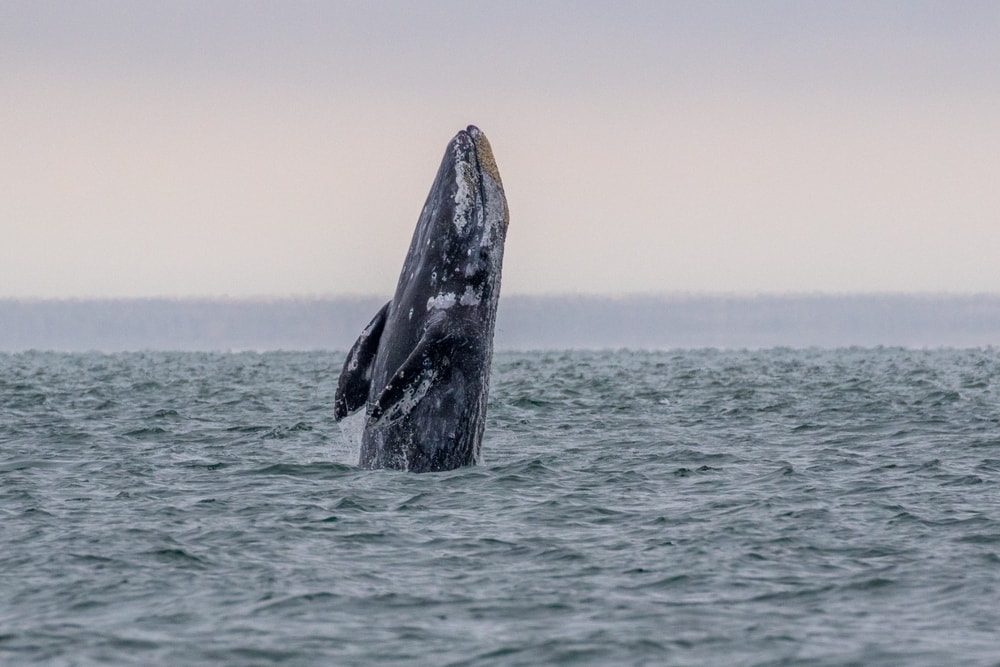
Gray whales are an endangered species found in the North Pacific Ocean. They can be recognized because of their double blow holes which can be found at the tip of the head. They are very large whales, reaching up to 49 ft (14.9 m) and weighing up to 36 tonnes.
They can be recognized because of their gray patching skin that is marked with white mottling. They are also unique in that they have a single, hard hair on their upper jaw, and their baleen is short and cream-colored.
Reproduction & Growth Habits
Compared to other baleen whales, gray whales have a high reproductive rate. It has been observed that gray whales will mate in a group of three or more individuals.
Gray whales do not have a specific breeding season, instead choosing to breed whenever they please throughout the year. However, most of them will breed sometime in the fall.
Gestation is long, lasting for about 13-14 months, and nursing will occur for about 6-7 months. Like other whales, gray whales typically give birth to only one calf, but twins are possible on rare occasions.
The mothers choose to give birth in areas of shallow lagoons where there is less salt content. The area will generally be less than 13.1 ft (4 m) in depth because it makes swimming easier and safer for the calf.
Although the calves are weaned at about 6 months of age, they will not reach sexual maturity until between 5-11 years of age. The reason that the age range for sexual maturity is so broad is because a whale's size is what really determines their maturity rather than their age. A male whale is considered sexually mature at 36.4 ft (11.1 m), and females at 38.3 ft (11.7 m).
Although gray whales may become sexually mature at just 5-11 years of age, studies have shown that they will not give birth until about 22 years of age.
The average lifespan of gray whales is not well known, with their lifespan likely being between 25-80 years of age.
5. Belugas & Narwhals (Monodontidae)
Belugas and Narwhals are characterized by their large head which is shaped like a bulbous melon. They can reach a length of 9.8-16.4 ft (3-5 m). They do not have a real dorsal fin, but instead have a thin ridge along their back.
Belugas are different from Narwhals because they have several teeth, while Narwhals only have two teeth. Narwhals are most easily distinguished from Belugas because one of the teeth will grow into a long tusk at the front of the head in the males.
They also differ from where they're found. Belugas are found in the northern parts of the Atlantic and Pacific oceans. Narwhals, on the other hand, live where it's even colder, in parts of the Arctic and Atlantic oceans.
Reproduction & Growth Habits
Belugas (Delphinapterus leucas)
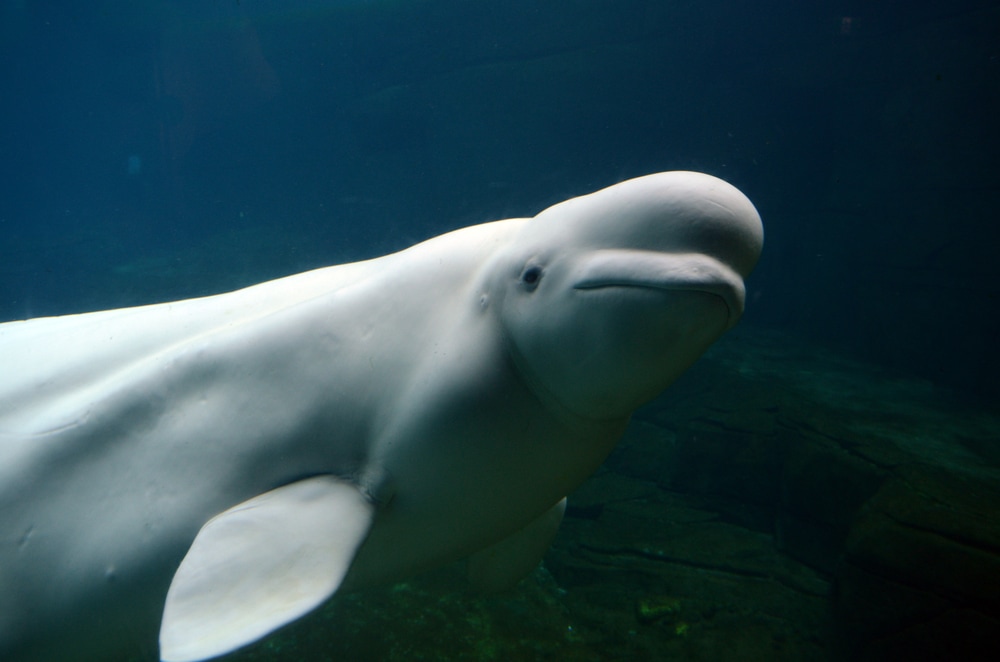
Similar to some other whales, belugas are polyandrous, meaning that a single female will mate with several males.
Typically, belugas will mate in late autumn or early spring. By doing so, they are ensuring that they can give birth during the warmer months. When they are ready to mate, the mother will migrate to estuaries where the water is shallow.
Gestation lasts for 12-15 months, and the mother will usually give birth to one calf, although twins are a possibility. Calves will generally wean at just 3 months of age, although they may nurse for up to 3 years. The age at which they wean is often the same age where they become independent. Some calves will stay with their mother for up to 3 years.
As the calf begins to wean, the mother will start teaching it how to hunt for shrimp and small fish.
Some belugas may reach sexual maturity at just 4 years of age, although this is much younger than what is normal. Males take longer to reach sexual maturity, taking 7-9 years to become sexually mature. You can usually tell when a male beluga has reached sexual maturity because his skin color will change from gray to white.
Females, on the other hand, become sexually mature between 4-7 years of age. Unlike most whales who do not give birth for years after reaching sexual maturity, female belugas will give birth almost immediately. They will give birth about once every 3 years, oftentimes having up to 10 pregnancies throughout their lifetime.
In the wild, belugas are thought to live for about 40-60 years.
Narwhals (Monodon monoceros)
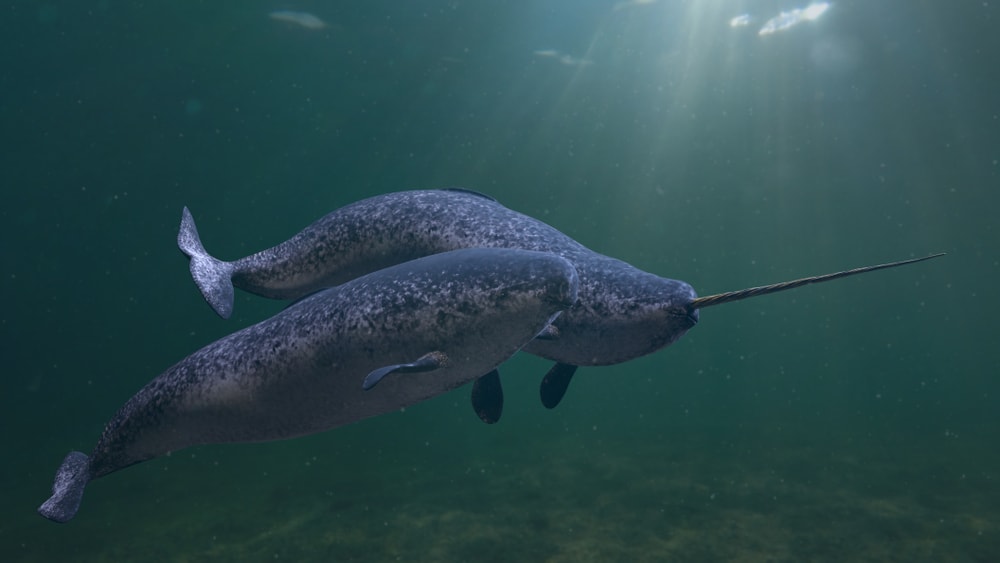
There is not much known about the mating behaviors of narwhals, but scientists believe it is similar to that of the belugas. They believe that the horn-like tooth on the head of male narwhals is judged by females to select a mate. However, this assumption is not clear, and researchers are unsure about the exact purpose of the horn.
However, scientists do know that narwhals mate between March and May, and they give birth about once every 2-3 years. Their gestation period lasts for about 14 months, and newborns will stay with their mother until they become independent at about 20 months. Researchers are not sure how many of those months are spent nursing.
Unlike with other whales, researchers believe that male narwhals help with some of the child rearing. They believe this is true because while the calf is young, the father can be seen swimming around with the mother and child. When there is no calf around, the male will not spend time with the female.
It is believed that narwhals can live up to 50 years, but there has not been enough research performed to back this up.
6. Sperm Whales (Physeteroidea)
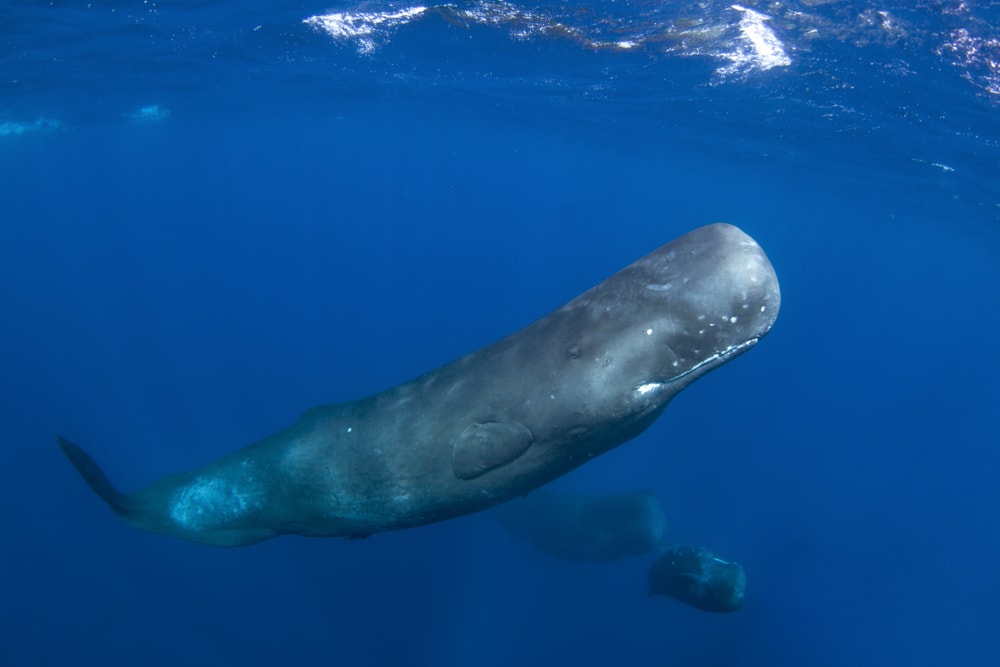
Sperm whales get their name from the white liquid that aids them in both reproduction and communication. There is a waxy semi-liquid substance called spermaceti that is stored in the head. There is an organ located in the head that is made specifically to hold the spermaceti. Besides reproduction, the whales use this substance to locate sounds while swimming.
As one of the largest whales in the world, Sperm whales can reach a weight of 45-70 tonnes. They are the largest species of toothed whale, and they have the largest brain of any mammal in the world.
These whales are easy to recognize because they are long with a boxy head and body. The flippers are also quite wide and appear somewhat like paddles. Their lower jaw is smaller than their upper, and they have many teeth. Their eyes can not move around in their head, so they primarily depend on echolocation to get around.
Reproduction & Growth Habits
Sperm whales are polygamous, and the males will form breeding schools during the breeding season. 1-5 males can be seen in a group along with several females.
The males will compete fiercely with each other for access to the females, and they often leave each other with battle scars. Because of this competition, only about 10-25% of the male sperm whale population is successfully able to breed.
The gestation period of these whales will last for about 14-16 months, and the mother will usually give birth to one calf, although twins are sometimes possible. A mother sperm whale will only give birth once every 2-5 years. When her calf is born, it will nurse with her for up to 2 years.
Male sperm whales become sexually mature much sooner than they actually begin breeding. Males become sexually mature at about age 10, while females become sexually mature between the ages of 8-11. While females may begin breeding right away, males will not begin breeding until about 25-27 years of age because they are unable to compete with older males.
Sperm whales are known to live up to 77 years.
7. Dwarf & Pygmy Sperm Whales (Kogiidae)
The Dwarf and Pygmy Sperm whales are the smallest species of whales with a body length of just 8.5 ft (2.6 m) and a weight of only up to 882 pds (400 kg). Like their larger cousins, their bodies and heads are boxy, and their lower jaw is smaller than their upper jaw.
A unique characteristic of these small whales is how they defend themselves from predators. They will release over 3 pds (1.4 kg) of a fecal substance that closely resembles ink. This thick, dark substance disorients predators and gives the whale just enough time to get away.
Reproduction & Growth Habits
Dwarf Sperm Whale (Kogia sima)
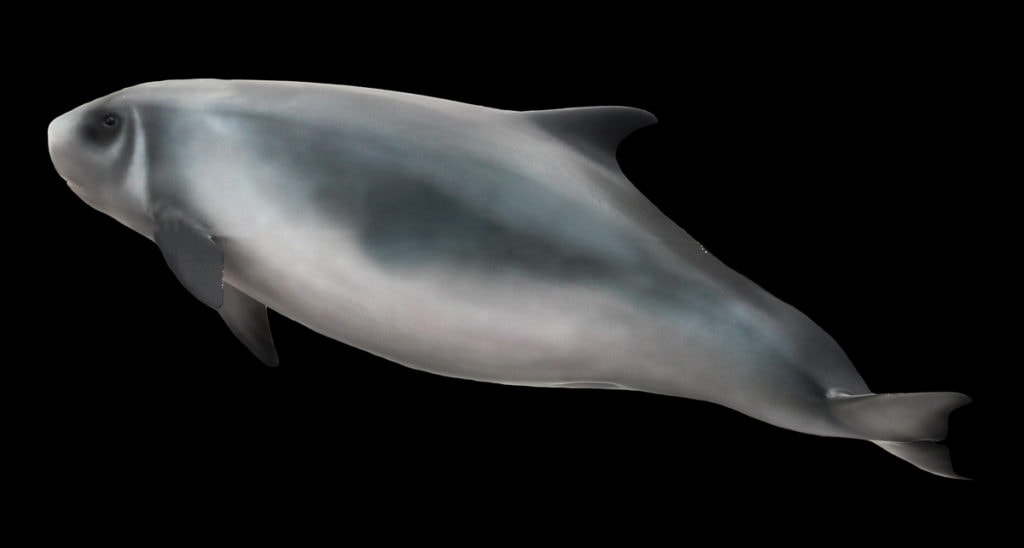
There is very little known about the reproduction and mating habits of the dwarf sperm whale. It is likely that their habits are similar to that of the larger sperm whales.
Researchers do know that, when they are mating, dwarf sperm whales will line up their bellies so that the male can insert his penis into the female to fertilize her.
Once the female becomes pregnant, her gestation period is thought to last for 9 months. Unlike most whales who only give birth once every two years or more, dwarf sperm whales are believed to give birth annually.
The lifespan of these whales is unknown. They have mostly been studied in captivity, and no dwarf sperm whale has survived more than one year in captivity.
Pygmy Sperm Whale (Kogia breviceps)
Very little is known about the reproductive habits of the pygmy sperm whale. Mating usually takes place in the summer, and the gestation period lasts for about 9 months. Researchers believe that the calves will nurse for about 12 months after birth.
Their lifespan is believed to be about 17 years.
8. Beaked Whales (Ziphiidae)
The Ziphiidae family contains the largest number of whales, consisting of 22 whales that live deep within the depths of the sea. These whales are moderately sized with bodies ranging from 13.1-42.7 ft (4-13 m) and weighing up to 15 tonnes. They have just a single pair of teeth that are difficult to see because they are hidden behind the gums.
As you can probably guess from their name, these whales are known for their mouth which is elongated into a beak-like shape. The shape of their mouth allows them to easily dive to deeper depths while looking for food. The furthest a whale has ever been recorded to dive was 9,816 ft (2,992 m) which took almost 2.25 hours to complete.
Reproduction & Growth Habits
Baird's Beaked Whale (Berardius bairdii)
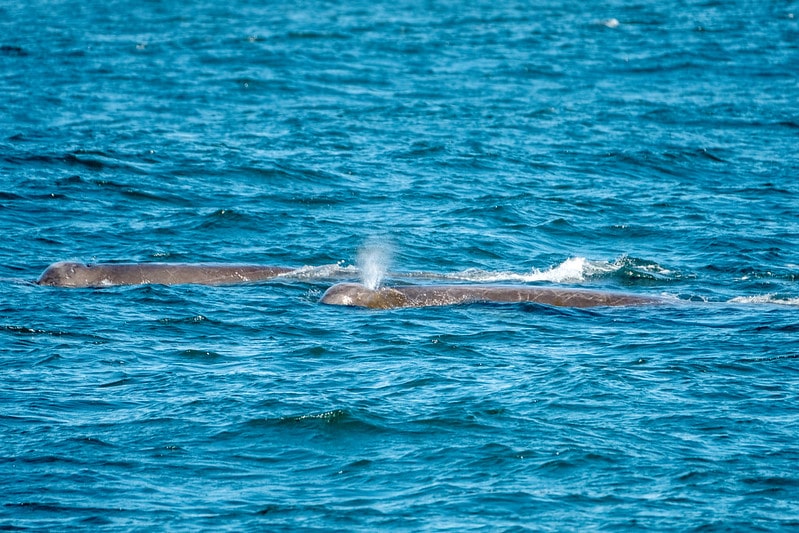
Baird's beaked whales breed in the summer in warm waters off the coasts of Japan and California. Once they are pregnant, the gestation period lasts for about 10 months, although researchers have noted pregnancies that have lasted up to 17 months. The mother will give birth to one calf about once every three years. Calves will be born between November and May.
Their lifespan is believed to be about 70 years.
Northern Bottlenose Whale (Hyperoodon ampullatus)
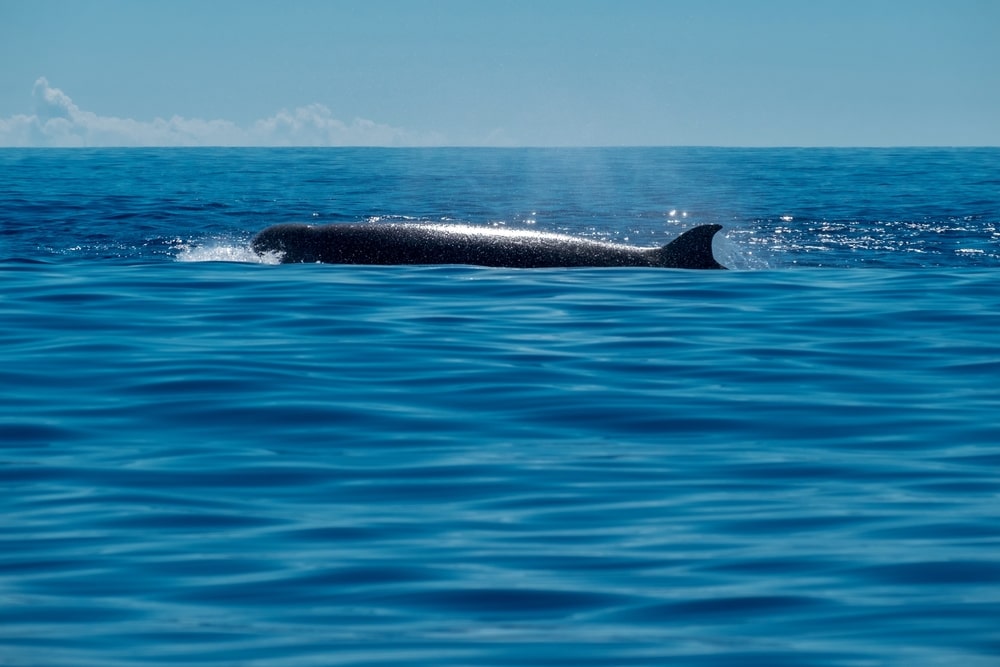
Researchers believe that northern bottlenose whales are polygynous, with one male mating with several females over the breeding season. They will mate in the spring and summer, and calves will be born between April and June. Gestation is believed to last for about 12 months, and the calf will wean after about 12 months. A female whale will give birth once every 2-3 years.
Male calves will reach sexual maturity at just 7-9 years of age when they are about 23.9-24.9 ft (7.3-7.6 m), and females will reach sexual maturity at about 8-14 years of age when they reach 21.9-22.9 ft (6.7-7 m).
Northern bottlenose whales will live to about 37 years of age.
Andrew's Beaked Whale (Mesoplodon bowdoini)
Not much is known about the reproductive habits of Andrew's beaked whales. However, researchers have noted that males lack scarring on their body that would suggest any aggressive competition between males. Breeding is believed to take place in the summer and fall.
The lifespan for these whales is unknown.
Source: https://outforia.com/how-do-whales-mate/
0 Response to "How Does a Blue Whale Obtain a Mate"
แสดงความคิดเห็น